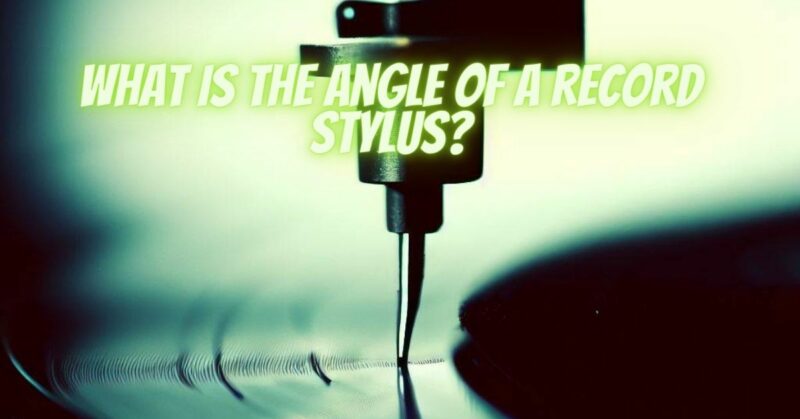In the world of vinyl records, the interaction between the stylus and the grooves is a delicate dance that determines the quality of sound reproduction. The angle of the record stylus is a crucial element in this intricate process. In this article, we will delve into the significance of the record stylus angle, how it impacts sound quality, and the technology behind ensuring optimal performance.
Defining the Stylus Angle
The stylus angle, also known as the tracking angle, refers to the angle at which the stylus tip meets the groove walls of a vinyl record. This angle is vital because it affects how the stylus traces the groove, extracting the audio information encoded within.
Impact on Sound Quality:
- Tracking Accuracy: The stylus angle directly influences how accurately the stylus tracks the grooves. An incorrect angle can result in mistracking, where the stylus doesn’t follow the groove accurately, causing distortion and potential damage to the record.
- Reduced Wear: An optimized stylus angle reduces the wear and tear on both the stylus and the vinyl record’s grooves. This preservation extends the life of your records and ensures consistent sound quality.
- Enhanced Channel Separation: The correct stylus angle contributes to better channel separation, preventing crosstalk between the left and right audio channels and maintaining a clean stereo image.
Technology and Stylus Alignment:
- Baerwald Alignment: The Baerwald alignment, also known as the Löfgren A alignment, is a widely used method for setting the stylus angle. It involves achieving the correct tangential tracking angle at two specific points on the record.
- Stevenson Alignment: The Stevenson alignment focuses on minimizing distortion in the inner grooves of a record. It sets the stylus angle for the innermost and outermost grooves, ensuring consistent sound quality across the entire playing surface.
- Technological Advancements: Modern advancements, such as computer-based alignment tools and digital readout systems, have made it easier to achieve precise stylus angles. These tools ensure accurate alignment without the need for manual adjustments.
Achieving the Optimal Stylus Angle:
- Alignment Tools: Utilize alignment protractors, templates, and digital tools designed for specific stylus angles and alignments. These tools guide you in positioning the tonearm and stylus correctly.
- Professional Setup: Seek the assistance of professional audio technicians or vinyl enthusiasts who have experience in accurately aligning stylus angles. Their expertise can ensure optimal performance.
- Manufacturer Guidelines: Consult the manufacturer’s guidelines for your turntable and cartridge. They often provide recommended stylus angles and alignment methods for your specific setup.
Preserving the Analog Magic
The stylus angle may seem like a technical detail, but its impact on your vinyl listening experience is significant. By understanding and optimizing the stylus angle, you can preserve the analog magic of vinyl records, ensuring accurate sound reproduction and prolonging the life of your cherished collection.
The angle of the record stylus is a critical factor in extracting the true beauty and fidelity of analog audio from vinyl records. Proper alignment techniques, advanced tools, and adherence to manufacturer guidelines can lead to a sublime listening experience where every note, every nuance, and every emotion encoded in the grooves comes to life with remarkable precision.


